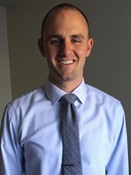Program Information
A Model for Secondary Monitor Unit Calculations of Pencil Beam Scanning Proton Therapy Treatment Plans
G Schimke*, H Wu , Willis-Knighton Medical Center, Shreveport, LA
Presentations
SU-I-GPD-T-118 (Sunday, July 30, 2017) 3:00 PM - 6:00 PM Room: Exhibit Hall
Purpose: To develop and implement a model by which secondary monitor unit calculations may be performed for pencil beam scanning proton therapy treatment plans.
Methods: TPS simulations were performed using the local beam model to define relationships between PTV characteristics and the monitor units required to meet a given prescription for a defined beam orientation. Relevant attributes include mass, surface area, average radiological depth, and projection of the volume in the beam’s eye view (BEV). The proposed model approximates the PTV as a simplified box ROI as defined by its mass and BEV projection. Output factors (cGy/MU) were tabulated for the idealized box geometry through TPS simulations for ROIs within the range of dimensions expected to be seen clinically. Correction factors are then applied which account for differences in surface area and radiological depth between the PTV and the idealized conditions. The method was applied to geometries analogous to clinical treatment sites in an anthropomorphic phantom. Chosen sites were prostate, spine, and brain.
Results: Good agreement was observed between Raystation calculations and the proposed model within 4% for all tested geometries. Pending further investigation, results indicate the potential for routine clinical use.
Conclusion: This work demonstrates the potential for accurate estimation of monitor units in pencil beam scanning proton therapy. As a result of its simplicity, few user inputs are required, most of which are readily accessible in the TPS. Future investigation will expand the current model to accommodate a broader range of clinical geometries and optimization problems, as well as automate data retrieval from the TPS for facilitation of rapid clinical implementation.
Contact Email:
